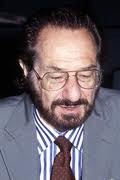- unknown (b.)
Bio/Description
An early pioneer of digital physics, in recent work, he uses the term digital philosophy (DP). His primary contributions include his work on reversible computing and cellular automata. While Konrad Zuse's book, Calculating Space (1969), mentioned the importance of reversible computation, the Fredkin gate represented the essential breakthrough. He dropped out of Caltech after one year and, at age 19, joined the USAF where he became a jet fighter pilot. His computer career started in 1956 when the Air Force assigned him to work at MIT Lincoln Laboratory. He worked at BBN in the early 1960s where he wrote the first PDP-1 assembler. In 1968, he returned to academia, starting at MIT as a full professor. From 1971 to 1974 he was the Director of Project MAC. He spent a year at Caltech as a Fairchild Distinguished Scholar, working with Richard Feynman, and was a Professor of Physics at Boston University for 6 years. More recently, he has been a Distinguished Career Professor at Carnegie Mellon University and a Visiting Professor at MIT. He founded Information International Inc. and has served as the CEO of a diverse set of companies, including Information International, Three Rivers Computer Corporation, and New England Television Corporation (owner of Boston's then CBS affiliate, WNEV, channel 7). He has been broadly interested in computation: hardware and software. He is the inventor of the trie data structure, the Fredkin gate and the Billiard-Ball Computer Model for reversible computing. He has also been involved in computer vision, chess, and other areas of Artificial Intelligence research. He also works at the intersection of theoretical issues in the physics of computation and computational models of physics. He recently developed Salt, a model of computation based on fundamental conservation laws from physics (Miller & Fredkin 2005). His profile along with a readable explanation of some of his theories can be found in the first part of Three Scientists and Their Gods by Robert Wright (1988). The section of the book which covers him was excerpted in The Atlantic Monthly in April 1988. Digital philosophy (DP) is one type of digital physics and pancomputationalism. The school of philosophy called pancomputationalism claims that all the physical processes of nature are forms of computation or information processing at the most fundamental level of reality. Pancomputationalism belongs to several larger schools of philosophy: atomism, determinism, mechanism, monism, naturalism, philosophical realism, reductionism, and scientific empiricism. Pancomputationalists believe that biology reduces to chemistry reduces to physics reduces to computation of information. His career and achievements have much of their motivation in "Digital Philosophy," a particular type of pancomputationalism described in his papers: "Introduction to Digital Philosophy," "On the Soul," "Finite Nature," "A New Cosmogony," and "Digital Mechanics." His digital philosophy contains several fundamental ideas: Everything in physics and physical reality must have a digital informational representation. All changes in physical nature are consequences of digital informational processes. Nature is finite and digital. The traditional Judaeo-Christian concept of the soul has a counterpart in a static/dynamic soul defined in terms of digital philosophy. He is considered to be the one that the character Stephen Falken in the film "WarGames" was modeled after according to biographer Robert Wright.
-
Gender:
Male -
Noted For:
His primary contributions include his work on reversible computing and cellular automata -
Category of Achievement:
-
More Info:


